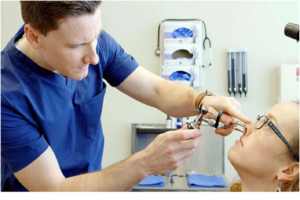
Skin cancer is not always a serious condition. A dermatologist may be able to treat this condition when diagnosed early. Skin cancer can appear anywhere on the skin. It can develop even in areas that get little sun. Also, it can appear in unexpected areas. This cancer can start under a fingernail or toenail, on a lip, or inside the mouth. Dermatologists offer a range of treatments for the various kinds of Cypress skin cancer.
Kinds of Skin Cancer
The severity of skin cancer depends on its kind. Below are different kinds of skin cancer:
- Melanoma. This is the most serious kind of skin cancer that can be deadly when it spreads to organs and glands. In its early stages, melanoma can be treated by a dermatologist. But the doctor will refer a patient to an oncologist when the cancer has advanced.
- Basal cell carcinoma. This skin cancer impacts the epidermis’ deepest layers. It can look like a small scar or sore on the skin that can manifest as a waxy bump. It grows slowly and may not metastasize. In general, this type of cancer results from prolonged exposure to the sun’s UV rays. A dermatologist can successfully treat this condition.
- Squamous cell carcinoma. This skin cancer impacts the skin’s uppermost layer. It presents as a red and inflamed crust that covers the skin. It can also be successfully treated by a dermatologist.
Treatment Options for Skin Cancer
The kind of treatment a dermatologist will use for skin cancer depends on the kind of cancer and its stage. The treatment options include:
- Surgery. This procedure is performed to get rid of skin cancer cells or moles. Surgical options include cryosurgery, Moh’s surgery, surgical excision, and curettage.
- Radiotherapy. In general, this procedure is performed to decrease the growth or tumor size. But radiotherapy is used for treating non-melanoma cancer. It requires several, short painless sessions that do not lead to scarring.
- Laser and phototherapy. Laser treatment is used to treat squamous cell carcinoma, eliminating the cancer cells’ top and upper layers. Phototherapy involves applying a solution to the area to be treated. Exposure to light activates the solution and eliminates cancer cells in the skin’s top layer.
Those who are noticing skin growth must visit a dermatologist to get an accurate diagnosis. During the visit, they can discuss the various treatment options available for cancer with their doctor. Dermatologists can deal with a range of skin problems and disorders as well as help patients restore their confidence and health.








